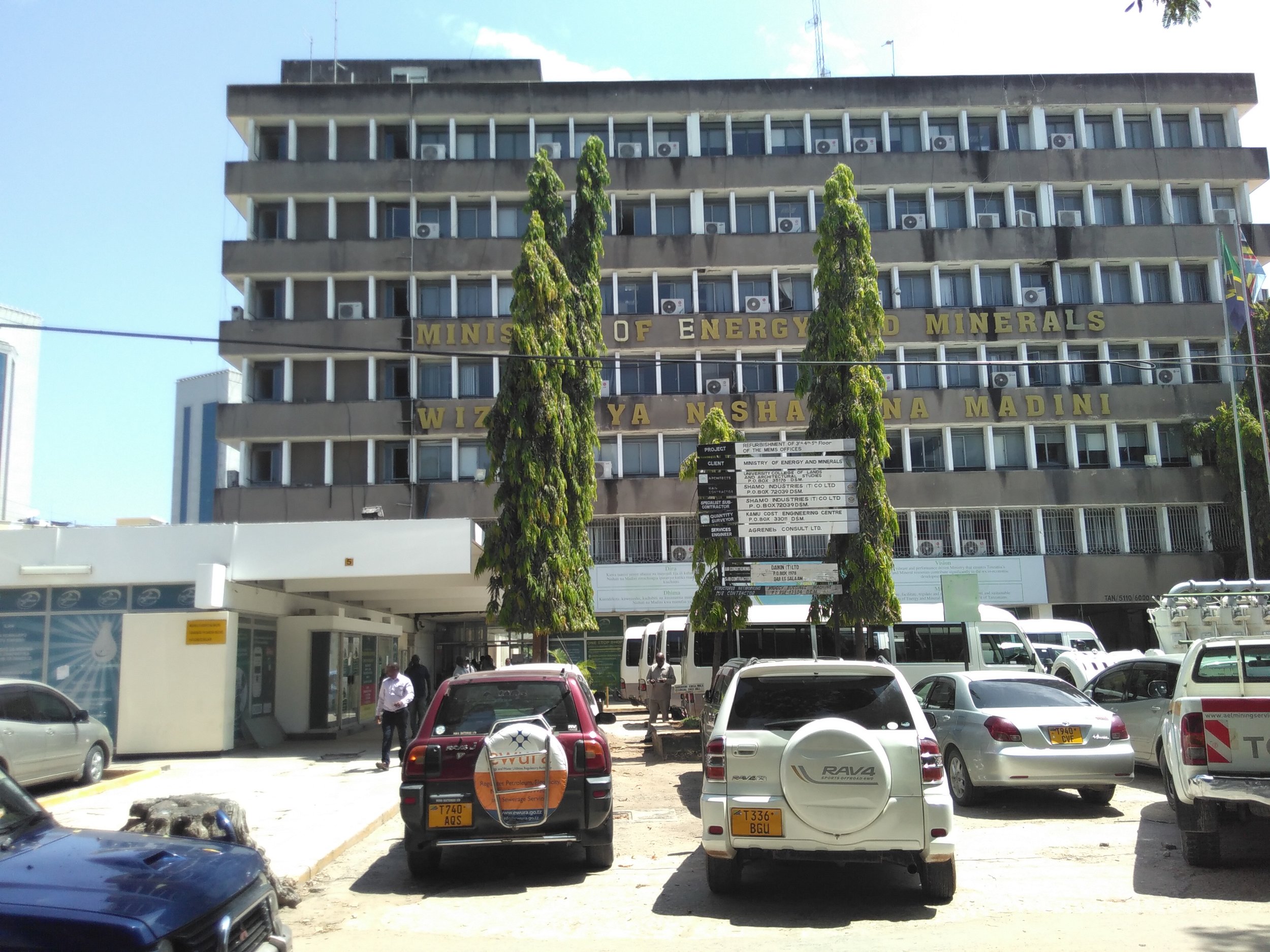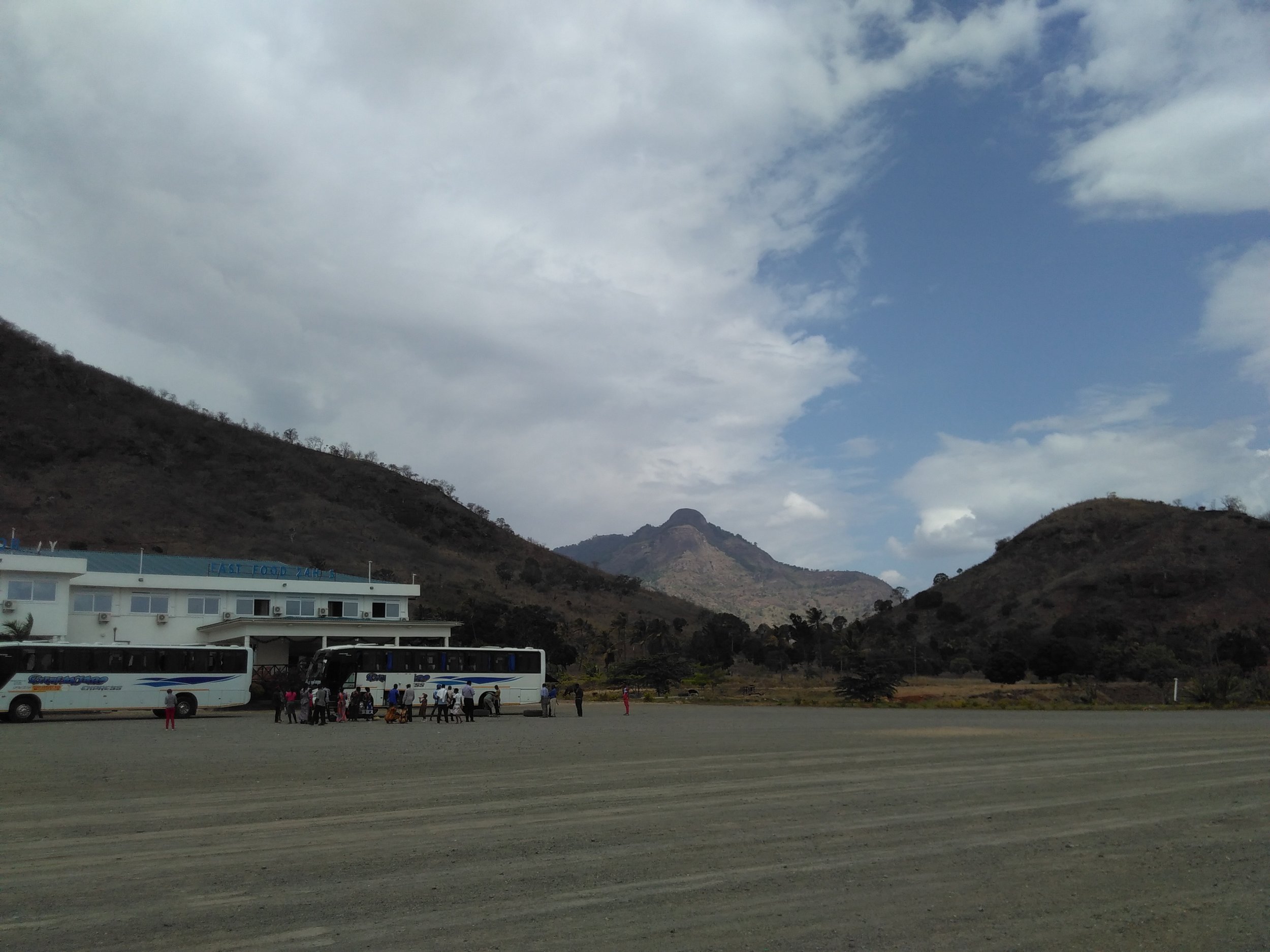Tanzania, Tsavorite mining trip
The Ministry of mines and eneregy in Dar es Salam
My trip to Tanzania, to visit Tsavorite mines, started in Dar es Salam and with a visit to the Ministry for Energy and Minerals. The purpose of the visit was two-fold. As this was my first trip to Tanzania I needed to find out about the process of buying and exporting gemstones for foreign buyers. I also wanted information about getting to the mines themselves. The process for foreign buyers is different in every country and its important to make sure you stick to the rules. The gemstone trade in Tanzania is well established and the process for exporting stones bought in the country is too. It involves purchasing from a licensed miner or dealer and then getting the stones sealed in a parcel for export via the ministry at a cost of $200. This information is available on-line, however in the weeks preceding my visit it was unavailable, plus, its always good to hear these things first hand and you are able to clarify anything that isn’t clear.
As I was on my own in Dar and the hostel was empty I took to a new app called showaround.com which connects travelers to locals and hired John who helped me get around the city.
One of the things I learned at the MoME in Dar es Salam was that I didn’t really need to be there. The process for exporting stones stipulates that the sealing of your package is done by the local branch of the MoME, in the region that you bought the stones, and that they were best placed to advise me on visiting mines in that area.
Helpfully, the official I spoke to gave me the contact details for the people in charge of the areas I was intent on visiting. With this information I was ready to leave Dar es Salam for my first destination, Arusha.
Waiting for the bus in Dar es salam
The bus from Dar es Salam to Arusha takes approximately 12 hours, and leaves Dar early in the morning. It takes you north and then west to Arusha via Moshi and into Tanzania’s mountainous north. I got the Kilimanjaro express, which is one of the higher end bus services on that route. Sadly, my place on the ‘deluxe bus’ had been double booked, so I had to wait another hour or so before the normal bus arrived.
Although long, the bus journey is interesting for first time riders as it takes you out of the city and through rural Tanzania, stopping on the way for toilet break’s and for lunch. The ‘normal bus’ is very comfortable, with refreshments handed out at various points along the way and entertainment in the form of music videos and Tanzanian films, which tend to be about witchcraft. A ticket on the normal bus costs TZS33,000 which is about £12.00
I arrived in Arusha at around 10PM on a Wednesday evening and quickly checked into The Arusha backpackers hotel, ready to get on the gem trail the next morning. Thankfully, Arusha is noticeably cooler than Dar es Salam, especially at night.
Arusha is the center of the gemstone trade in Tanzania, being situation close to the worlds only Tanzanite deposit and in an area that also has Tsavorite, Ruby and other minerals. It is home to the annual Arusha Gem Show, which attracts buyers from all over the world. The town is home to many dealers and cutters, and it is to Arusha that miners from all over Tanzania come to sell the stones they find. You can also find stones from the DRC and imported stones from gemstone trading centers like Thailand and Hong Kong.
In the morning, I headed into the town center with a list of names of dealers I had re-searched online and with the address of the local branch for the Ministry of energy and minerals.
Whilst sitting in a shady spot, topping up my phone, I met a guy who it turns out I would spend a good portion of the next 3 weeks with. Ramma is a Maasai and has been in Arusha for 7 months having previously lived his entire life in his village, and he speaks no English. I, despite some effort, speak very little Swahili but with the help of several bi-lingual Tanzanians on the street we managed to get along very well. Having met on the street, Ramma accompanied me to the Ministry of Energy and Minerals as well as around some dealers, some of which I had planned to go to and some of which were contacts of Ramma’s.
One thing you are not short of in Arusha is company. With the town being one of the starting points for the ‘Northern circuit’ of Safaris, there is the usual assortment of souvenir and art sellers, as well as beggars and hangers on that you will find in any tourist destination. Having Ramma around, he was able to explain that I was not a tourist and usher away the more persistent of these characters, as well as chat to locals in the stone business who were able to take me to meet more dealers. Over the course of the next 3 weeks Ramma was to serve as guide, minder, photographer, chief negotiator and friend.
At the ministry I met the Minister responsible for the northern zone and told him my plans, that I would like to see the mines and that I was looking to export stones. I was then talked through the process for exporting stones and told that any mine I visited needed to be registered and that certain mining areas, specifically those for Tanzanite, required foreigners to pay $50 to enter.
Ramma on the phone










